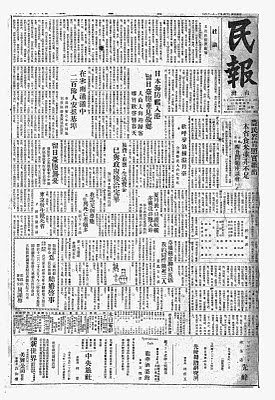民報, a newspaper published in Taipei, reported on Dec 24, 1945, that on the previous day, the first group of 865 Taiwanese had arrived in Keelung; 259 were on board the IJN No 44 海防艦escort ship [patrol boat] arriving at noon and the rest on the transport 夏月Natsugetsu [a converted destroyer], at 5PM. Both ships departed 加治木Kajiki, 鹿兒島Kagoshima on the 21st. And 153 of the 259 sailed on Nov 4 from the Philippines to Japan and then joined the others. At 9PM, this group arrived by train in Taipei Station into the welcoming arms of the happy family members.
Accompanying this news article are stories on the lives in the Philippines and Japan:
(1) Five Taiwanese army nurses survived the Philippines ordeal and returned home; 3 of their colleagues did not - who died of starvation;
(2) 89 Japanese died in the 上野Ueno District in Tokyo, also of starvation - blamed on the high cost of living;
(3) Of the 120,000 Taiwanese residing in Manila, many succumbed to the dismal living conditions, while many others went missing; and
(4) In Japan, several thousand apprentice soldiers and military employees from Taiwan were all safe and sound.
The editorial at the top was in support of the gov't's taking over the businesses previously nationalized by the Japanese - if the bureaucracy could be avoided. There is also a list of the price of various food items. And of course the inevitable advertisements, at the bottom: Movie theaters were showing Chinese and Japanese movies. A dance studio was recruiting ballroom-dancing students. And a hotel, a restaurant, and a tea house looking for clients plus an announcement of the opening of a new movie theater.
And on page 2:
 Gen Douglas MacArthur denied for the second time that he had resigned and claimed that he would be in Japan to complete his duties, not to obstruct American policies. Three high-ranking Japanese officers and 40 soldiers in Borneo were being tried for committing war crimes - in the killing of 550 British POWs. In 中壢Chung-li, a "bad-egg" Japanese official was found to have destroyed maps/documents on the irrigation system. In Kaohsiung, the 64 Aboriginal 社s (population 22,058) would now convert to self-ruling 村s. And 1,774 students took the first post-war entrance exam to National Taiwan University.
Gen Douglas MacArthur denied for the second time that he had resigned and claimed that he would be in Japan to complete his duties, not to obstruct American policies. Three high-ranking Japanese officers and 40 soldiers in Borneo were being tried for committing war crimes - in the killing of 550 British POWs. In 中壢Chung-li, a "bad-egg" Japanese official was found to have destroyed maps/documents on the irrigation system. In Kaohsiung, the 64 Aboriginal 社s (population 22,058) would now convert to self-ruling 村s. And 1,774 students took the first post-war entrance exam to National Taiwan University.At the bottom are the weather report, a treatise on 魯迅Lu Xun's poems (Lu, a famous Chinese poet who briefly studied medicine at Tohoku University in Sendai, Japan), a new-style poem (part 2) by an unknown poet, and Sec 23 of a long novel by 吳漫沙 (a famous author born in Hokkien).
Preparations for the New Year's Day celebration were also underway.
Life was good.
[A postscript: 民報 was forced to shut down on Mar 8, 1947, and its president Dr 林茂生 murdered.]

沒有留言:
張貼留言